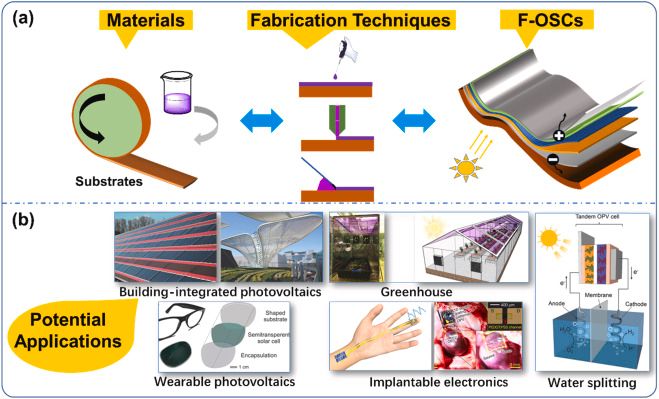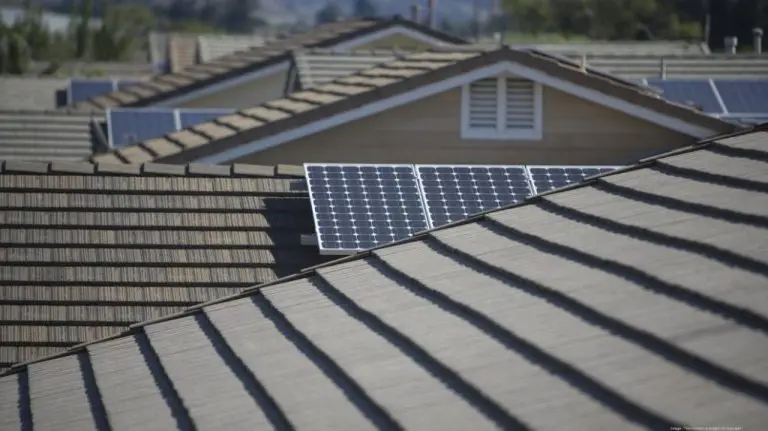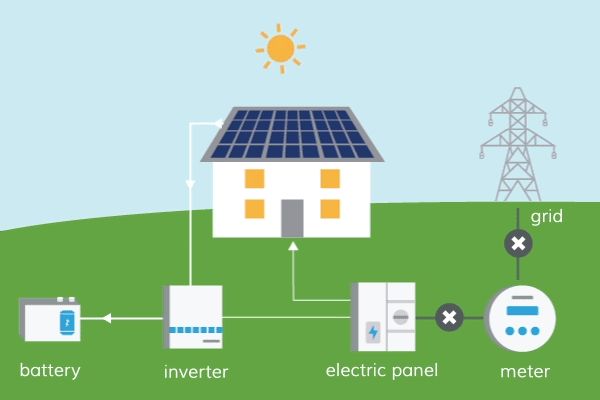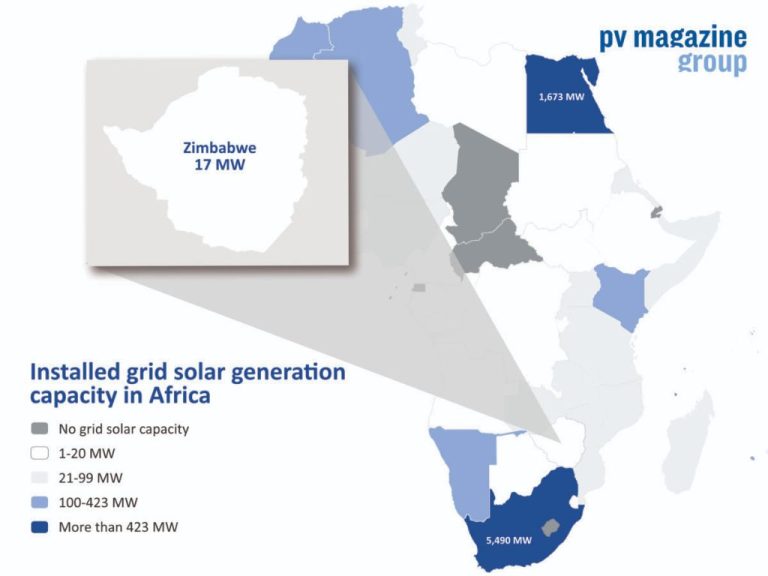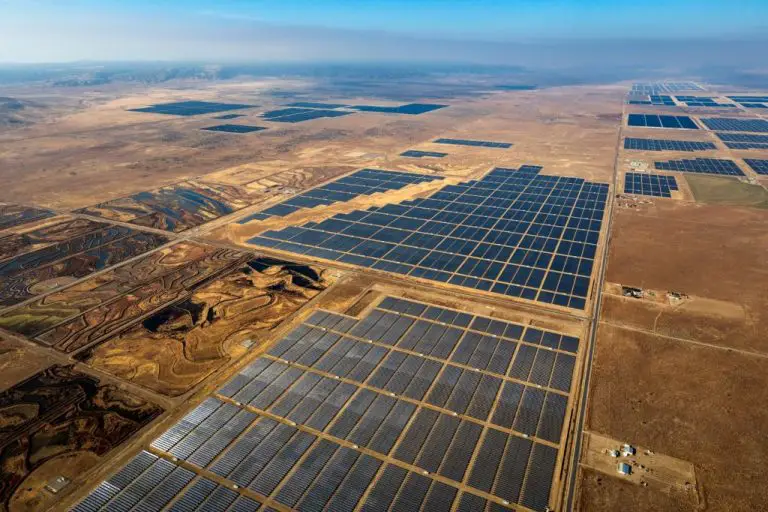Do Solar Panels Work In Rain?
Introduction
The sun is an abundant source of clean, renewable energy that can be harnessed through solar panels. More and more homeowners are installing solar panels on their roofs to reduce electricity bills and their carbon footprint. But what happens when the skies open up and solar panels get soaked by rain showers? Do solar panels continue to produce energy even when wet?
This is an important question for homeowners considering solar power, especially those who live in rainy climates. The performance of solar panels in wet weather is a key factor in determining the ROI of a solar system. In this article, we’ll explore how rain impacts solar panel output and efficiency. We’ll also provide tips on optimizing solar production and minimizing losses from rain.
How Solar Panels Work
Solar panels contain photovoltaic (PV) cells made of semiconductor materials like silicon. When sunlight shines on a solar panel, the PV cells absorb the photons, causing electrons in the cells to move and generate an electric current. This is called the “photovoltaic effect.”
The PV cells are wired together to form solar cell circuits. The more light that hits the PV cells, the more electricity they produce. The electricity generated flows through wires to an inverter, which converts the direct current (DC) electricity from the PV cells into alternating current (AC) electricity that can be used to power homes and businesses.
Solar panels produce clean, renewable electricity as long as sunlight is available. They generate the most electricity on sunny, cloudless days when light directly strikes the surface of the panels. Solar panels can still produce some electricity even on cloudy days or when indirect sunlight hits them.
Impact of Rain
Rain can have some effect on solar panel performance, but it does not completely block sunlight like dense cloud coverage does. During light to moderate rainfalls, solar panels can still generate a portion of their rated capacity. However, heavy downpours can cut power production more significantly. This is because water droplets on the panel surface can reflect and absorb sunlight before it reaches the solar cells underneath. The good news is that rainfall is temporary, and panels will resume normal operation once the rain stops and they have a chance to dry.
While rain may lower solar panel yield for a period of time, it does not permanently damage or jeopardize the equipment. Solar panels are designed to withstand typical outdoor weather conditions, including rain. Their protective glass casing and tight electrical seals keep the inner workings safe from water exposure or leaks. As soon as the rain passes, it’s back to business as usual for generating solar electricity.
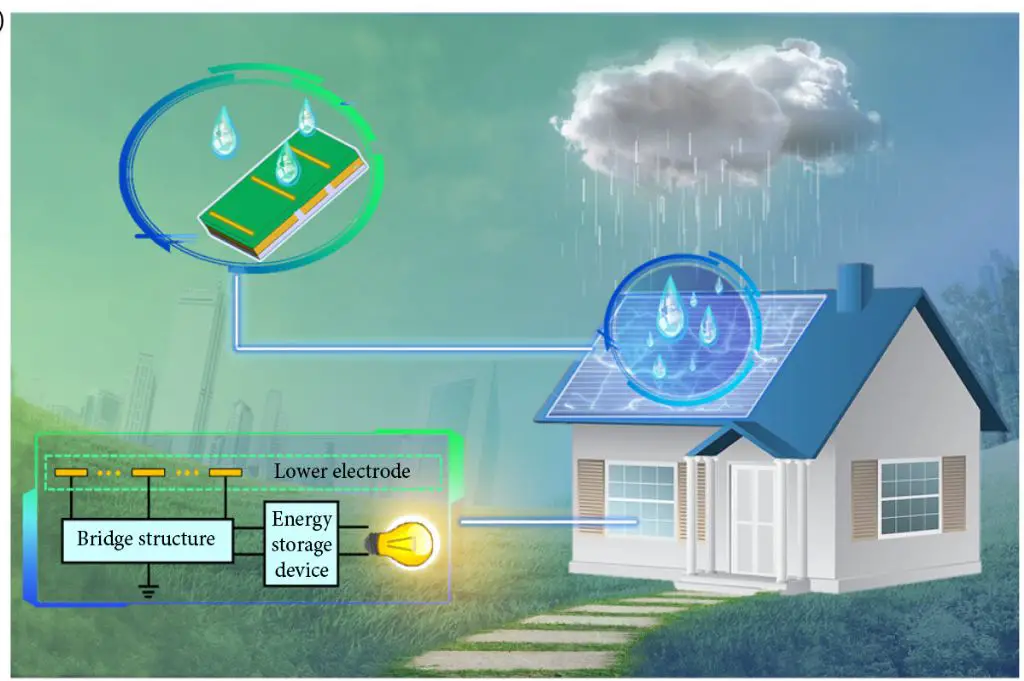
Angle of Panels
The angle at which solar panels are installed plays a role in how well they function in rainy conditions. Panels that lie completely flat are more likely to accumulate water, which can impact performance. Tilting panels at an angle allows the water to run off more easily. The optimal tilt angle depends on the climate and latitude, but typically falls between 10-40 degrees. Tilting panels at the angle recommended for a given region sheds rainwater quickly and minimizes puddles.
Installing panels at a steep tilt angle prevents water from pooling on top of the panels during wet weather. The water droplets can simply slide down the angled surface. However, tilting panels too far can also lead to suboptimal solar collection during sunny skies. The angle should strike a balance between promoting drainage during rains and capturing sufficient sunlight when it’s not raining.
Panel Materials
The materials used to manufacture solar panels can impact their performance in rainy conditions. Some materials are more water-resistant than others.
Most solar panels today are made of silicon, which is susceptible to performance issues when exposed to water. The glass covering on silicon panels helps protect them, but rain can still cause dirt buildup and reduced energy output.
Some newer solar panel models are made of monocrystalline silicon, which is more efficient and durable than traditional silicon. The tightly compacted structure of monocrystalline silicon makes it more water-resistant. These high-end panels lose less efficiency when wet.
Amorphous silicon thin-film panels are also now available. They absorb sunlight better than crystalline silicon, but are not as durable. The thin-film can become damaged when droplets collect and absorb heat. But manufacturers are working to improve the water-resistance of thin-film materials.
Overall, monocrystalline silicon panels are the most rain-resistant. But all solar materials can benefit from protective coatings and coverings that minimize wetness-related efficiency declines.
Cleaning
Rainwater can be helpful for keeping solar panels clean by washing away dust and dirt that accumulates on the panels. This is beneficial because dust buildup can reduce the efficiency and energy output of solar panels over time. However, rain can also leave behind mineral deposits from the dirt that can be challenging to remove.
As rainwater flows over the surface of solar panels, it picks up dust particles and washes them away. This automatic rinsing effect helps clear panels of dust buildup from the environment, reducing the need for manual cleaning. However, rainwater also contains mineral ions from the atmosphere and dirt that get deposited on the panels as the water dries. These mineral deposits can include calcium, magnesium, silica and other substances. If allowed to accumulate over time, they can form a coating over the panels that impairs light absorption and energy production.
Therefore, while rain provides a free cleaning service for solar panels, it can also leave behind mineral deposits that require occasional removal. To fully restore peak performance, solar panel systems in rainy climates may need periodic cleaning using demineralized water and appropriate solar panel cleaning products to remove any mineral buildup. Proper maintenance helps ensure long-term solar panel efficiency.
Preventative Measures
One way to protect solar panels from rain is by sealing vulnerable areas. Applying sealant around the edges and junction boxes of the panels can prevent moisture from seeping in. Silicone caulk or rubber gaskets make effective seals.
Special coatings and coverings can also help repel water. An anti-reflective coating will cause rain to sheet off the panel surface. Some manufacturers apply a hydrophobic layer during production for enhanced water resistance. For extreme weather conditions, installing a sturdy transparent cover over the array provides an extra barrier against the elements.
Regular maintenance like reapplying sealants and fixing any damaged protective layers will improve the lifespan of solar panels in rainy climates. While rain can’t be prevented, proactive steps can significantly minimize its impact on performance.
Performance Metrics
When measuring the performance of solar panels, it’s important to compare output on rainy days versus sunny days. There are a few key metrics to look at:
Energy Yield – This measures the total amount of energy (kWh) produced by the solar panels over a period of time, such as a day, month or year. The energy yield on a rainy day will be lower than on a sunny day.
Capacity Factor – This metric compares the actual energy output to the maximum possible output if the panels were operating at full capacity 24/7. Capacity factor will be reduced on rainy days.
Performance Ratio – This accounts for various losses and converts the output to a percentage of the nameplate rating. Performance ratios tend to range from 70-90% but can dip below 50% on rainy days depending on weather conditions.
Sun Hour Equivalent – This converts the energy output into equivalent hours of full sun. A rainy day may only generate 25% as many equivalent sun hours compared to a sunny day.
Monitoring these metrics over time shows the impact weather conditions can have. While output is reduced on rainy days, high-quality solar panels can still generate a meaningful amount of electricity.
Regional Differences
The amount of rain a region receives can impact the effectiveness of solar panels. Areas that get heavy rainfall throughout the year may need to take extra precautions compared to drier climates.
For example, the northwest region of the United States receives much more rainfall than the southwest. The northwest may require more frequent panel cleaning and maintenance. Tilting panels at a steeper angle can allow rainwater to run off more easily. Using glass solar panels instead of plastic can also reduce rain-related issues.
Conversely, in the sunny and arid southwest region, rain is less of a concern. Solar panels can be installed at more optimal angles for maximum sun exposure. Plastic panels might perform well given the lower rainfall amounts.
Ultimately, understanding the typical regional rainfall patterns can help determine the ideal solar panel setup, angle, and maintenance regime for a specific location.
Conclusion
To summarize, the impact of rain on solar panel performance depends on several factors. Solar panels can generally withstand normal rainfall, but heavy rain or ongoing wet weather reduces their efficiency due to less direct sunlight exposure. The angle of the panels plays a role, with steeper angles allowing rain to run off more easily. Panel materials also make a difference, with glass and anti-reflective coatings better at minimizing rain-related losses. Keeping panels clean through regular maintenance helps maximize efficiency after rainy periods. Installing panels in drier regions typically results in higher overall performance metrics. With proper precautions, solar panels can produce sufficient energy even in rainy climates. The main takeaway is that while rain does negatively affect solar panel output to some degree, much can be done through strategic panel placement, angles, and materials to mitigate these losses and enable solar to remain a viable energy source year-round.

